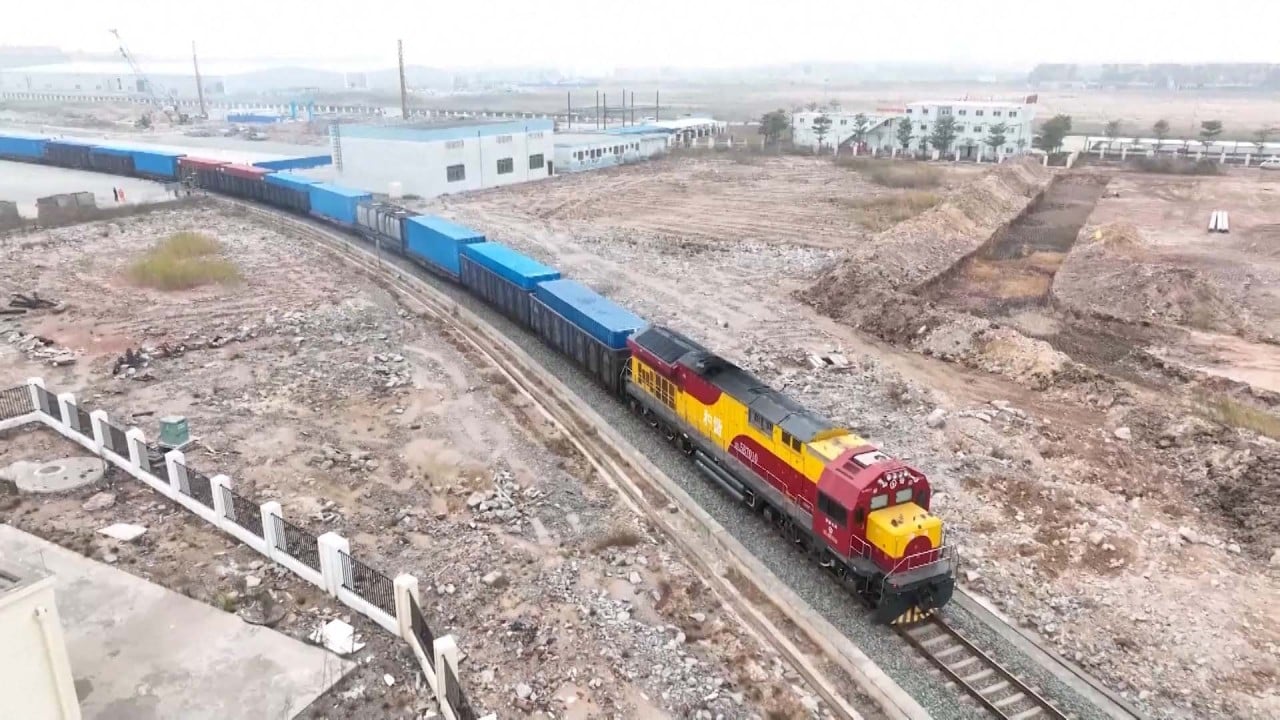
China-EU trade: commercial ties ‘hard to break’ despite disagreement over Ukraine war
- China surpassed the United States to become the European Union’s largest trading partner in 2020-21 thanks to strong demand during the pandemic
- Despite EU frustrations with Beijing over its stance on the Ukraine war, trade ties will be hard to break, regardless of attempts by European policymakers to diversify
Trade between China and the European Union (EU) could see some minor strains over Beijing’s stance on the Ukraine war, but decoupling is unlikely given the entrenched commercial relationship and impracticality of diversifying supply chains, experts say.
China surpassed the United States to become the EU’s largest trading partner in 2020-21 thanks to strong demand during the coronavirus pandemic.
The EU trade in goods with China was worth €587.9 billion (US$637.2 billion) in 2020 and €695.5 billion in 2021, according to Eurostat, the European Commission’s statistics database.
The EU trade in goods with the US was valued at €556.2 billion in 2020 and €631.4 billion in 2021.
Despite booming trade, the EU-China relationship has become strained over the past two years, with a long-negotiated investment deal between the two suspended in May last year.
“China-EU trade will change in the short term not due to China’s stance on Ukraine,” said Wang Jue, associate fellow at Chatham House’s Asia-Pacific programme. “But it’ll be affected by reasons related to the war, such as railway interruption, technical and logistical issues, as well as energy supply.”
Tang Heiwai, acting director at the University of Hong Kong’s Asia Global Institute, said the Ukraine war will not affect trade “in a significant way”, given China remains a major supplier of manufactured products, such as computers, household appliances and mobile phones.
“We have seen how China’s economic recovery from the Covid-triggered recession in 2020 [and] 2021 was largely driven by export growth, with China running a record-breaking trade surplus in 2021,” he said.
If you also take into account trade in services, the US remains by far the most important trade partner of the EU
EU imports from China rose to €472.2 billion last year from €385.1 billion in 2020, widening the bloc’s trade deficit with the country to €248.9 billion.
“Indeed, China has surpassed the US to be the EU’s largest trading partner, but we should be cautious with interpreting the 2020 and 2021 figures, as well as the 2022 figures later on,” said Maartje Wijffelaars, senior economist for the Eurozone at Rabobank.
“Data of the past two years is distorted by the pandemic, with on and off closures and openings of economies and excess savings, as less money could be spent on services.”
Guillaume Van der Loo, an EPC-Egmont Research Fellow at the European Policy Centre, said the trade in services between China and the EU was “relatively underdeveloped” when considering the size of the Chinese market and the volume of bilateral trade.
“If you also take into account trade in services, the US remains by far the most important trade partner of the EU,” he said.
“Trade in services is growing much faster than trade in goods. Trade in services between the EU and the US was in 2020 almost five times higher than trade services between the EU and China.”
In terms of outbound investment, Van der Loo said the EU has invested around €148 billion in China over the past two decades, whereas China had spent around €117 billion in the EU.
“The EU’s direct investment in the US is almost 15 times larger than its investment in China, while Chinese investment in the EU amounts to about one-twentieth of US investment,” he said.
Despite the strong trade ties, discussions about diversifying supply chains from China to boost self reliance are gathering pace in Europe.
“I think that even if the EU wants to reduce its reliance, the reality is that many European companies are still quite committed to the Chinese market, either in terms of selling to Chinese consumers or sourcing key goods from Chinese factories,” said Nick Marro, lead for global trade at The Economist Intelligence Unit.
Those commercial ties will be hard to break, regardless of attempts by EU policymakers to diversify the bloc’s trade
“Those commercial ties will be hard to break, regardless of attempts by EU policymakers to diversify the bloc’s trade and investment links.”
China remains a competitive manufacturing hub in terms of costs, labour, logistics networks and industrial estates, he added, which are factors that other rival markets have struggled to replicate to a similar scale.
“Even Vietnam, which has benefited strongly from supply chain diversification over the last four years, can’t match China in many of these areas,” he said.
Tommy Wu, lead economist at Oxford Economics based in Hong Kong, said political pressure for economic decoupling has risen sharply in recent years and the Ukraine war added “new challenges”.
“The EU can reduce its reliance on Chinese products to some extent over the medium to longer term, through reshoring, expanding operations in Eastern Europe and importing from Southeast Asian countries,” he said.
“But even by combining the production bases in Southeast Asia, the size will still be dwarfed by China’s massive and sophisticated production base.”
Wijffelaars, from Rabobank, said it is possible for the EU to reduce reliance on China if it is willing to pay more to onshore supply chains, citing efforts to build semiconductor and battery plants on the continent.
“The major question is to what extent the EU can reduce reliance [because] you cannot onshore everything,” she said.
“Furthermore, the EU needs China for a broad range of rare earth elements and some other critical raw materials for multiple applications and its green energy transition.”



